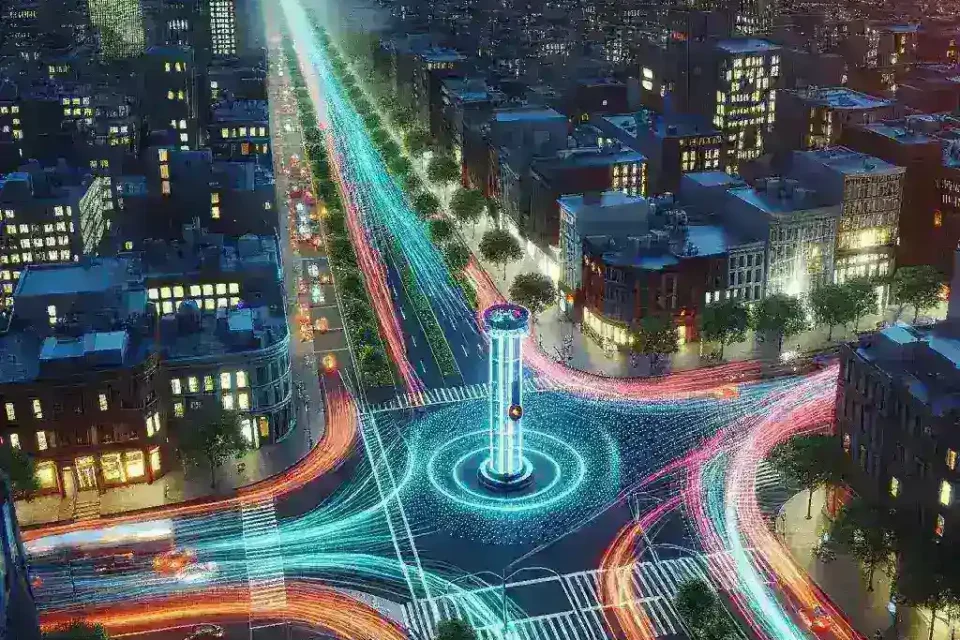US Cities Test AI Traffic Lights to Cut Congestion and Reduce Emissions

Introduction
As urban populations continue to swell, traffic congestion becomes an increasingly pressing issue in cities across the United States. This predicament not only frustrates commuters but also contributes significantly to greenhouse gas emissions. To address these challenges, numerous US cities are now testing advanced AI traffic light systems designed to enhance traffic flow, reduce congestion, and ultimately lower emissions.
The Rise of AI in Urban Traffic Management
Artificial intelligence has permeated various sectors of society, and urban traffic management is no exception. Cities such as San Francisco, Los Angeles, and Boston are at the forefront of this technological revolution, piloting AI traffic lights that promise to revolutionize how traffic is controlled.
Understanding AI Traffic Lights
AI traffic lights utilize sophisticated algorithms and real-time data to optimize signal timing. By analyzing traffic patterns, weather conditions, and pedestrian movements, these smart systems adjust light cycles dynamically to improve traffic flow.
How AI Traffic Lights Work
- Data Collection: Sensors embedded in the roadway or connected to cameras gather data on vehicle counts, speeds, and movement patterns.
- Data Processing: The collected data is processed using machine learning algorithms that predict traffic conditions and adjust signals accordingly.
- Real-Time Adjustments: The traffic lights can change their cycles in real-time, reducing waits for vehicles and pedestrians alike.
Benefits of AI Traffic Lights
The implementation of AI traffic lights presents a multitude of benefits for urban environments.
1. Reducing Congestion
By optimizing traffic flow, AI traffic lights can significantly reduce congestion during peak hours. Studies indicate that cities implementing these systems have witnessed a reduction in average travel time by as much as 20%.
2. Lowering Emissions
With improved traffic flow, vehicles spend less time idling at red lights, which translates into lower emissions. According to the Environmental Protection Agency (EPA), a 10% reduction in idling can result in a significant decrease in carbon dioxide emissions.
3. Enhancing Safety
AI traffic systems not only focus on vehicles but also prioritize pedestrian safety. By detecting pedestrian movements, the lights can adapt to ensure safer crossings, ultimately reducing accidents.
4. Cost-Effective Solutions
While the initial investment in AI traffic light technology may be substantial, the long-term savings achieved through reduced congestion and lower emissions often outweigh costs. Moreover, cities can save on infrastructure costs as AI technologies can extend the lifespan of existing traffic control systems.
Challenges and Considerations
Despite their benefits, implementing AI traffic lights is not without challenges.
1. Initial Costs
The upfront costs associated with installing AI traffic light systems can be substantial. Cities must weigh these costs against potential long-term savings and benefits.
2. Integration with Existing Infrastructure
Integrating AI systems with older traffic management infrastructure can be complex and technologically challenging, requiring specialized expertise.
3. Privacy Concerns
Collecting data through cameras and sensors raises privacy issues among citizens. Cities must ensure transparency and implement measures to protect individuals’ privacy.
Case Studies of Success
Several cities have already begun to see the positive impacts of implementing AI traffic light systems.
San Francisco’s Adaptive Signal Control Technology (ASCT)
San Francisco has implemented an Adaptive Signal Control Technology that adjusts traffic signals in real-time based on vehicle and pedestrian traffic patterns. Since its adoption, the city has observed a notable decrease in congestion and commute times.
Los Angeles’ Smart Traffic Lights
Los Angeles has also joined the ranks with its smart traffic light initiative. By employing AI algorithms, the city has been able to reduce traffic delays by approximately 15%, significantly improving air quality.
The Future of AI Traffic Management
As cities continue to evolve, the future of AI traffic management looks promising. Experts predict that as technology advances, AI traffic systems will integrate with autonomous vehicles, creating an even more efficient transportation ecosystem.
Potential for Nationwide Implementation
The success seen in pilot programs may lead to broader adoption across the country. With government support and increasing public awareness of environmental issues, the push for smart city solutions will only grow.
Conclusion
AI traffic lights represent a significant advancement in urban traffic management, offering solutions to reduce congestion and lower emissions. While challenges remain, the potential benefits for cities are immense. As more cities embrace this technology, the future of urban mobility looks bright, paving the way for more sustainable and efficient transportation systems. With the implementation of AI traffic lights, US cities are taking a crucial step towards creating smarter, greener environments for all residents.
